Most people associate wireless speakers with Bluetooth and a democratic price range that the majority can identify with. That doesn’t mean there are no wireless speakers for a narrower market and in a completely different price range. Just look at Bang & Olufsen’s superb Beolab 28, which impressed in our test.
The heavy price tag probably makes the Beolab 28 inaccessible to many, and may act as a deterrent to those who think Bluetooth speakers rarely have more than four digits on the price tag.
But there’s a big segment between the cheapest and most expensive wireless speakers: the premium class. Here, English KEF has ruled the roost in recent years with speakers like the LSX and LS50 Wireless, among other manufacturers that also make wireless speakers. Such as DALI, Devialet, Bowers & Wilkins, Piega and Dynaudio, to name just a few with which we have in-depth knowledge.
Wireless music in stereo has never been better than with KEF's small speakers.
In fact, the best of them are actually so good that they can convince even the most die-hard hi-fi purists.
Because not only can you stream music wirelessly with Bluetooth – or via Wi-Fi when you want better, high-resolution sound from Tidal or Qobuz. You can also connect other audio sources, such as a CD player, a turntable or – if the speaker has an HDMI input – a TV placed between the speakers.
The KEF LS60 Wireless can do all this. But they do it with a sound quality that’s so convincing it’s almost sensational.
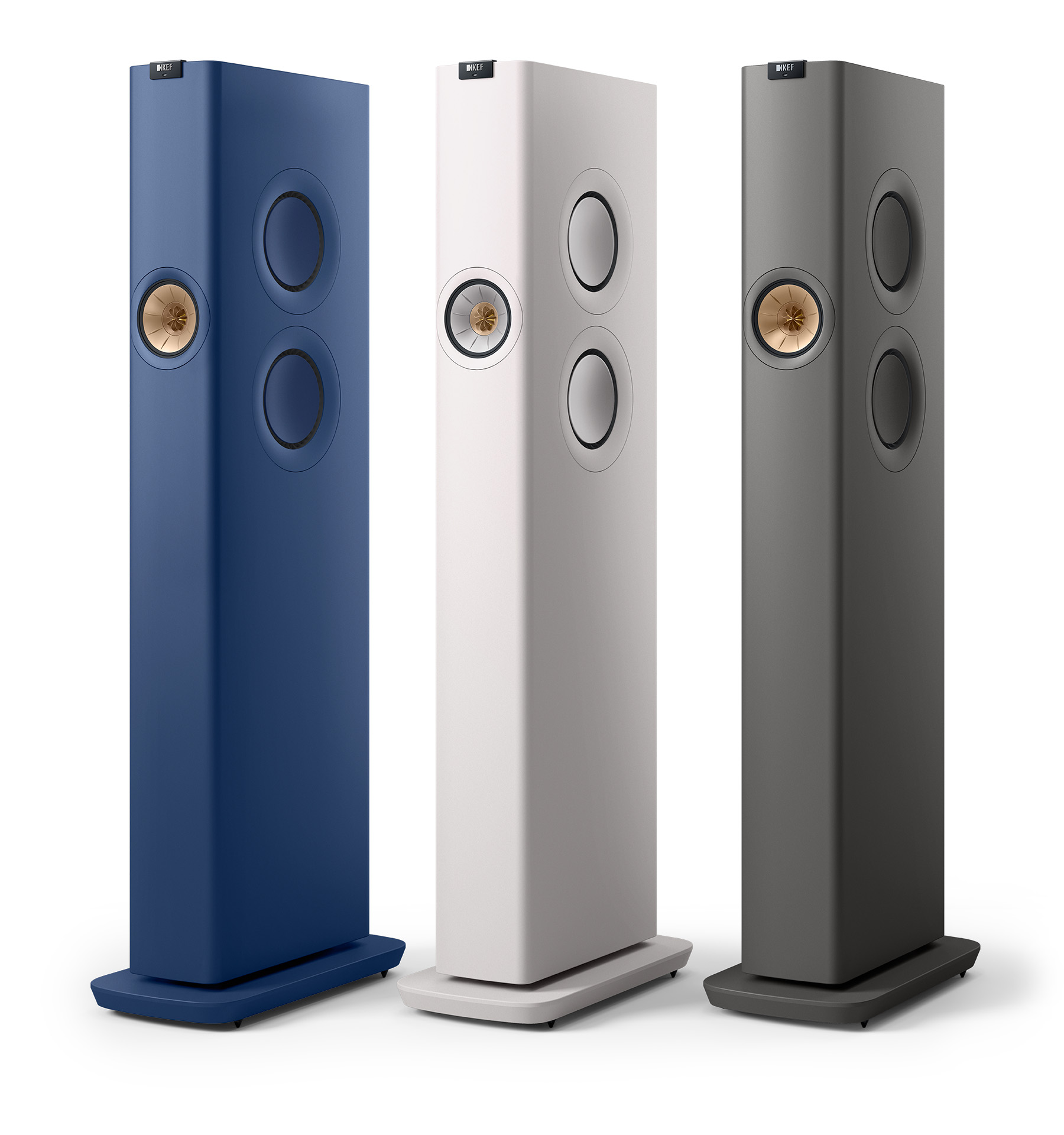
KEF LS60 Wireless
The floor-standing LS60 Wireless not only fulfils a long-held wish of our – a floor-standing version of the LS50 Wireless. No, KEF have taken it even further and created an active, wireless and incredibly potent floorstander that most resembles a KEF Blade Light. Or at least a Reference 5 Light.
The speaker features four side-mounted woofers, combined with KEF’s latest UNI-Q coaxial unit on the front. Inside is a 500 watt Class D amplifier module driving the four 13 cm woofers, which together have a surface area equivalent to two 10-inchers.
The coaxial UNI-Q unit has a 100 watt Class D module for each of the cones – the 10 cm midrange cone and the 2.5 cm tweeter in the centre of the unit.
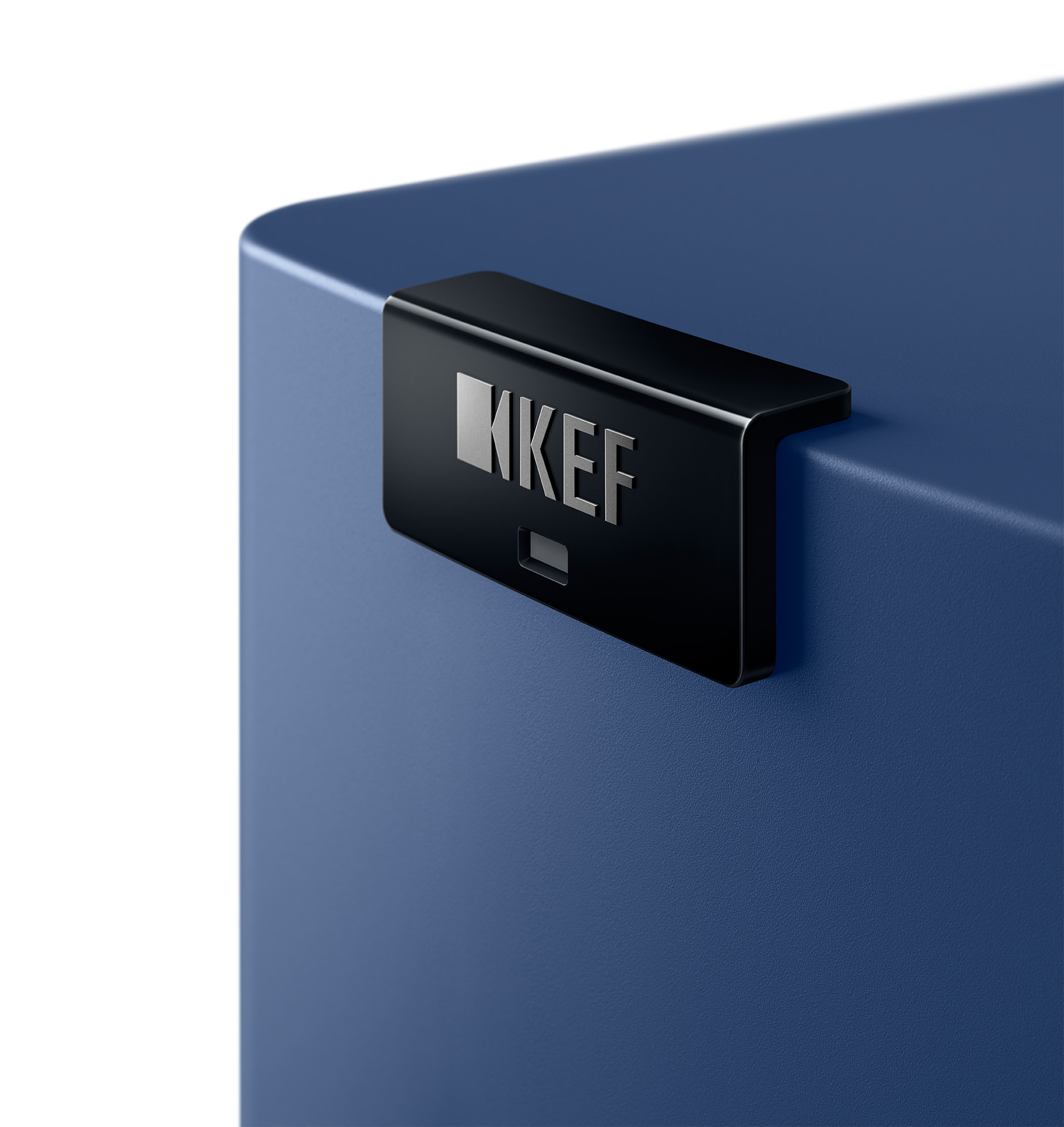
Connections
Turn one speaker over and you’ll find all the connections for external sound sources. Such as digital coaxial input, an optical TOSLINK input, Ethernet for wired networking, USB-A for mobile charging and service, and RCA input for analogue audio sources. For example, a phono turntable or a CD player.
The TV connects directly to the speaker via an HDMI eARC input, and then you can control the sound with the TV remote, which also turns on the speaker when you turn on the TV.
The second speaker has only an Ethernet input, so it can be connected to the first speaker, and of course a three-pin power connector for the built-in amplifiers. There’s also a subwoofer output on both speakers, and the set-up is very simple. Especially if you have a newer KEF subwoofer.
Then just select the KEF sub in the app, and the sub frequency and level are set automatically. Of course, it’s also possible to connect other subwoofers and adjust the low-pass and high-pass frequency, level and phase yourself.
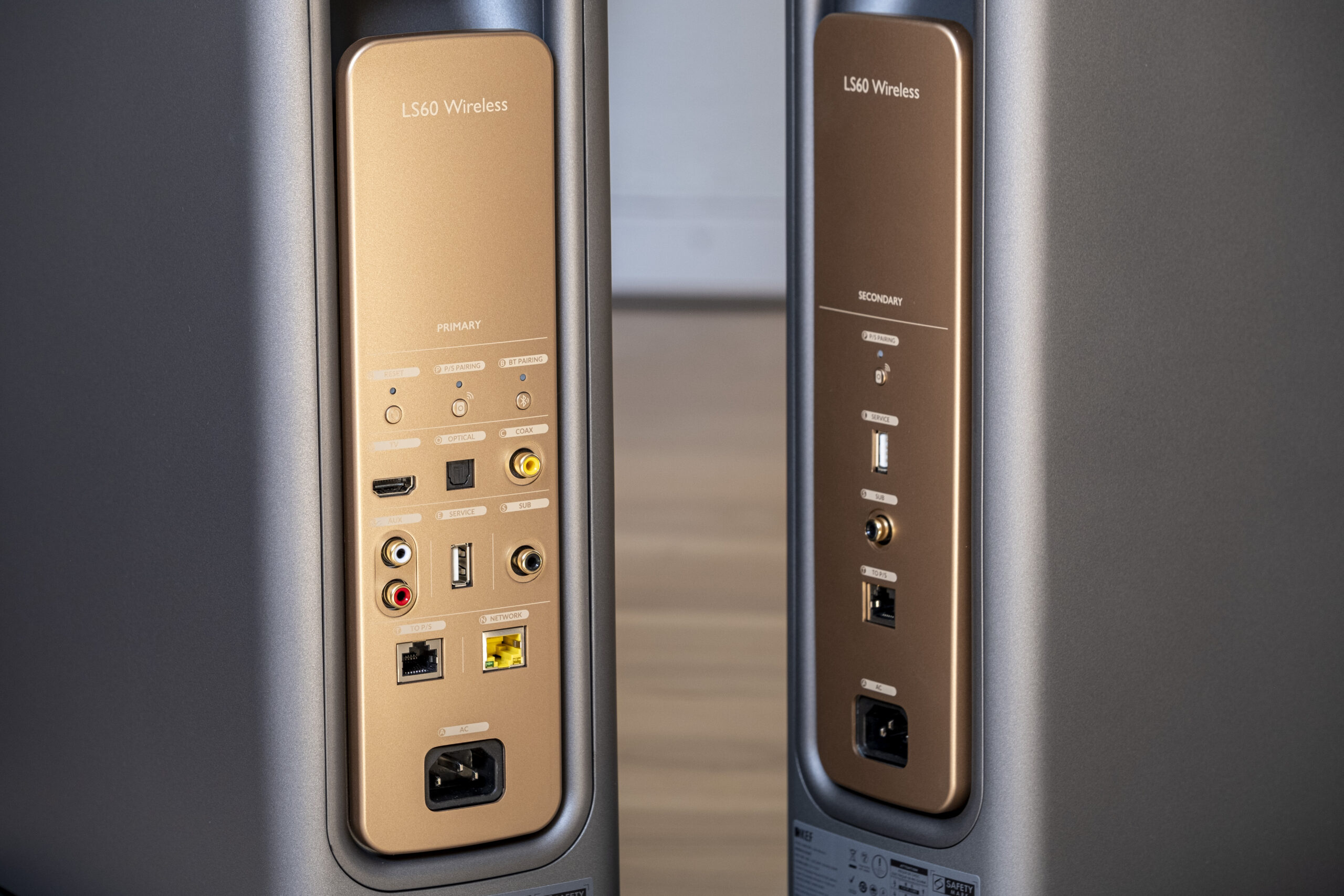
Significant quality boost
In addition to Bluetooth, which is considered low-resolution and not “hi-fi” because it compresses audio files so much, the LS60 Wireless supports lossless, uncompressed audio via Wi-Fi and Ethernet. This means you can play master files from Tidal with MQA encoding or receive up to 24-bit/384 kHz PCM audio when the speaker is connected to the network by cable.
The HDMI input supports 24 bit/192 kHz, as does the digital coaxial input, while the optical limits 24 bit files to 96 kHz. This also happens when streaming via Wi-Fi, so you get up to 24 bit/96 kHz. In any case, it’s a significant quality boost over Bluetooth.
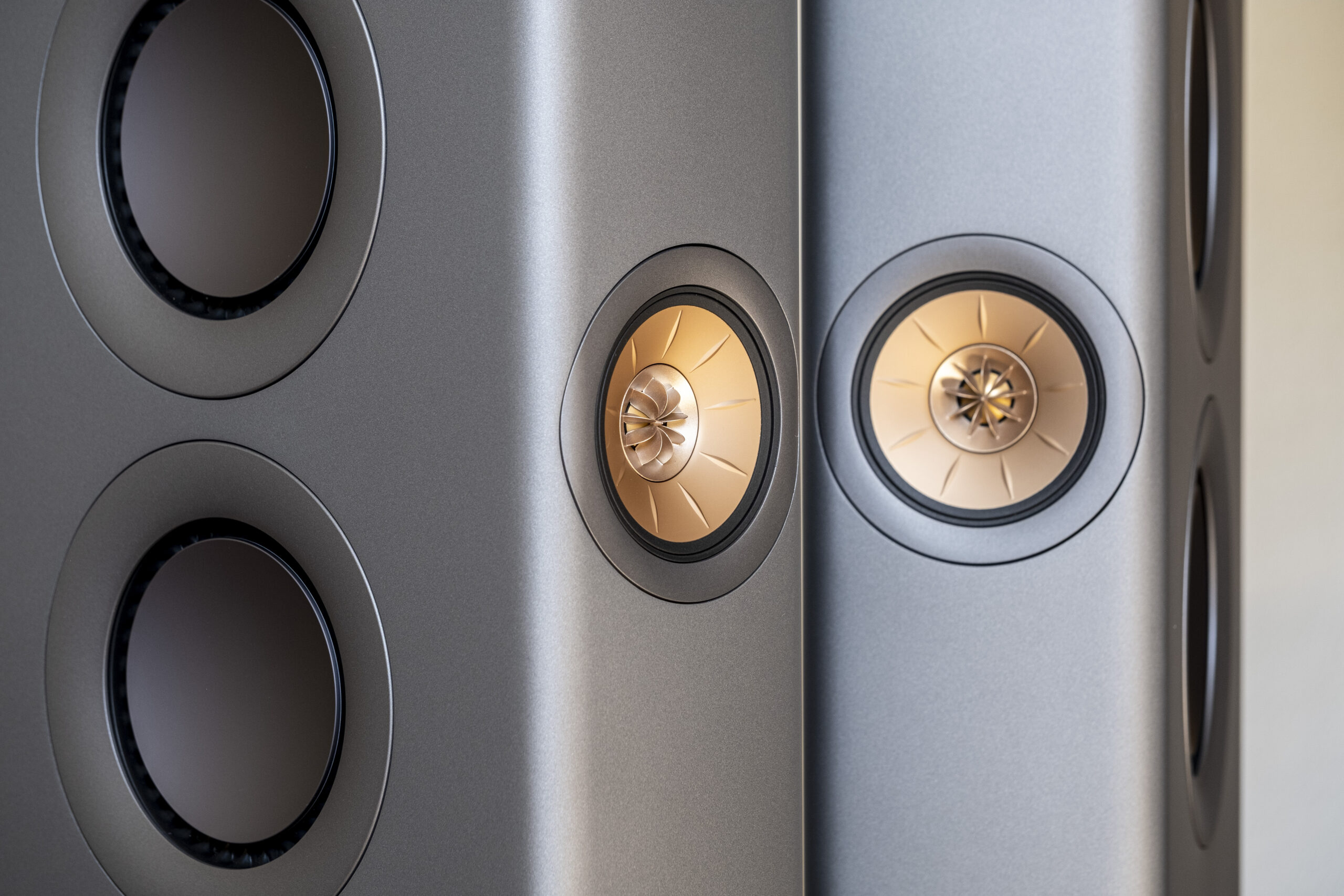
User-friendly app
The speakers have also been given support for playback via Roon for the many who have gradually started to collect music through Roon’s clear user interface.
They’re easily controlled with the included remote, which is just too simple, though. A small plastic thing with a four-way control for volume and source selection, and buttons for playback. It’s handy enough and works well enough for everyday use, but the KEF Connect app is where you’ll find content on Spotify, Tidal, Qobuz, Deezer or Amazon Music. Oddly, Apple Music isn’t included in the app.
The app also has internet radio and podcasts integrated as well as a separate tab for music, which is accessible on a computer connected to the same network as the speakers.
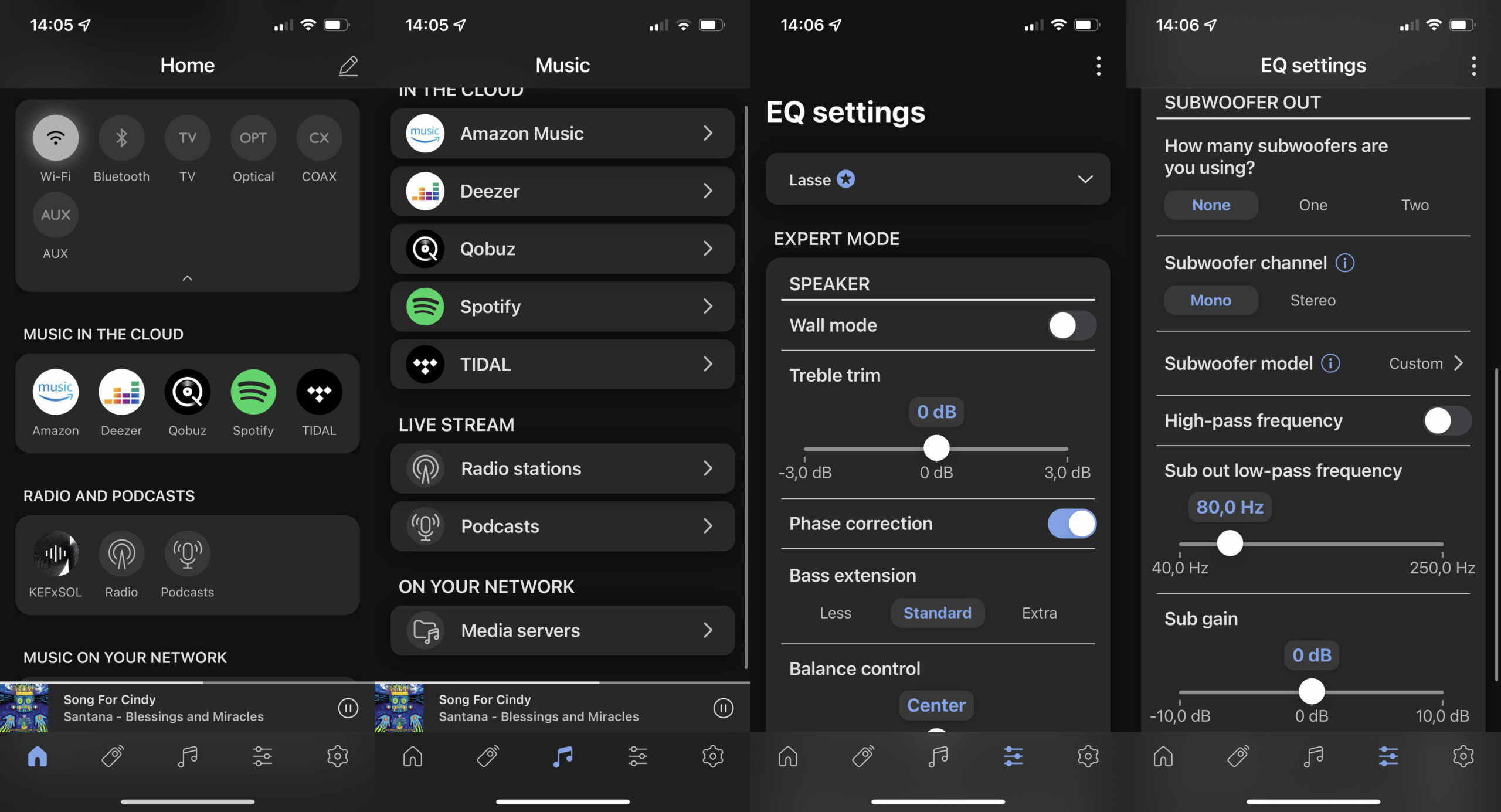
It’s also in the app that you’ll find the settings that can give you even better sound. Here you can adjust bass and treble, and choose from three bass profiles: limited, standard and extended.
You can also adjust the balance of the sound according to the position of the speakers in the room. Either against the wall or out on the floor. In my experience, you should choose the Wall setting wherever the speakers are placed. I’ll come back to that.
But let me just add that you can save your preferred sound profile in the app.
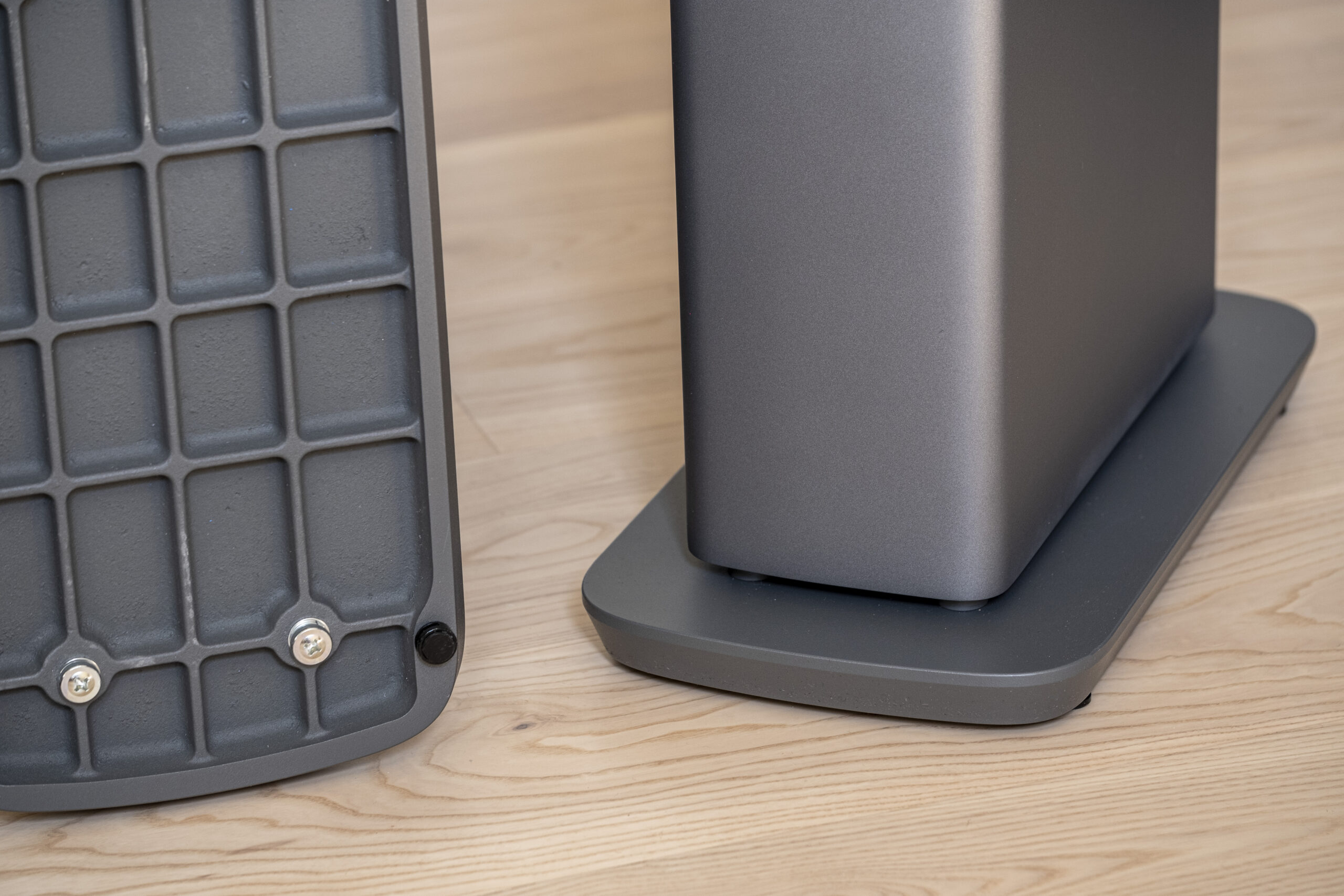
The speakers’ 12th generation Uni-Q unit has been given the same META treatment as in the LS50 Wireless, Reference 5 Meta and Blade Meta.
I don't care if it's rock or classical you're listening to. These otherworldly speakers shake your body and give your ears the finest massage.
The special Uni-Q unit has a new surround and voice coil system with better damping in the space between the tweeter and midrange diaphragm, and distortion has been reduced from 0.1 to 0.07 percent (THD at 90 dB).
Behind the Uni-Q unit is a round plate with a milled labyrinth-like pattern to absorb unwanted sound. KEF calls it Metamaterial Absorption Technology – MAT – and says it removes 99 percent of unwanted frequencies in the 620 Hz to 40 kHz range. MAT is also said to provide 40 percent more linear frequency response over a wider frequency range.
It’s noticeable, and we still remember our amazement when the first notes flowed out of the LS50 Wireless II, which also features MAT technology. The music was better defined with greater detail and no emphasis.
It’s the same here, but the LS 60 Wireless can do more than that. In fact, they can play much louder and much deeper, and they are more dynamic and even more open than the LS 50 Wireless II.
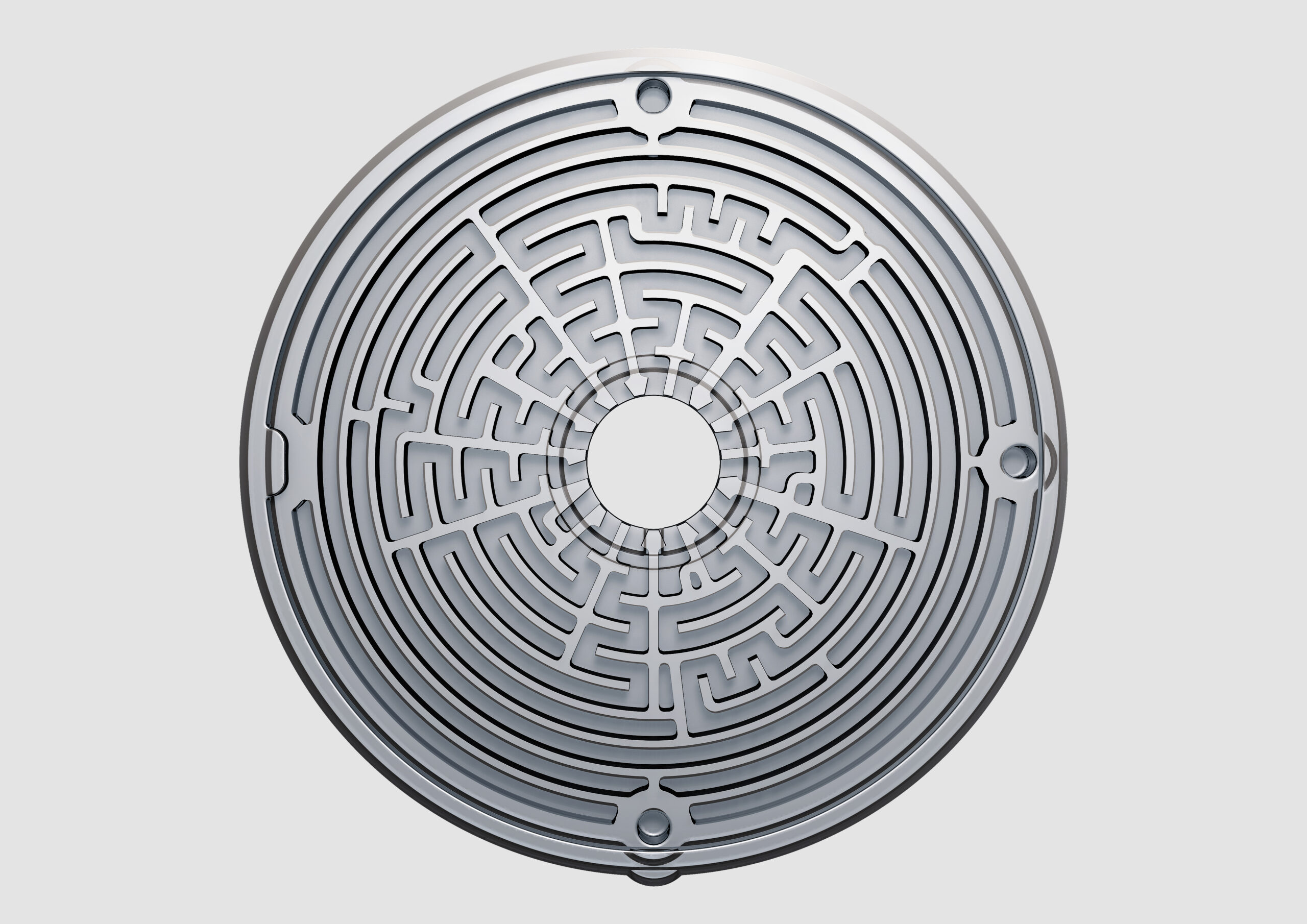
Of course, they go much deeper in the bass, and that can definitely be felt. It simply gets too much straight out of the box, so you have to access the app, select the Wall setting (wherever they are in the room) and attenuate the bass in 0.5 dB steps until you get the optimum balance in the soundstage. Try it out – some like extra-bold bass, while others prefer a slimmer bass in favour of more midrange focus.
The bass definitely had to be muted on Santana and Steve Winwood’s rendition of “A Whiter Shade of Pale”. When the drums come in after a few verses, I had to rush to the glass cabinet where the wine glasses threatened to commit collective harakiri. With the bass muted -1.5 dB, it also became easier to get more information out in the midrange.
The opening number of Keith Jarrett’s Köln concert sounded touchingly beautiful through the KEF speakers. The sound signature was recognisable from the KEF Reference 5 Meta and Blade Meta, and I would venture to say that the new UNI-Q unit is among the most neutral, most open and fastest coaxial units in the entire industry. Perhaps the very best.
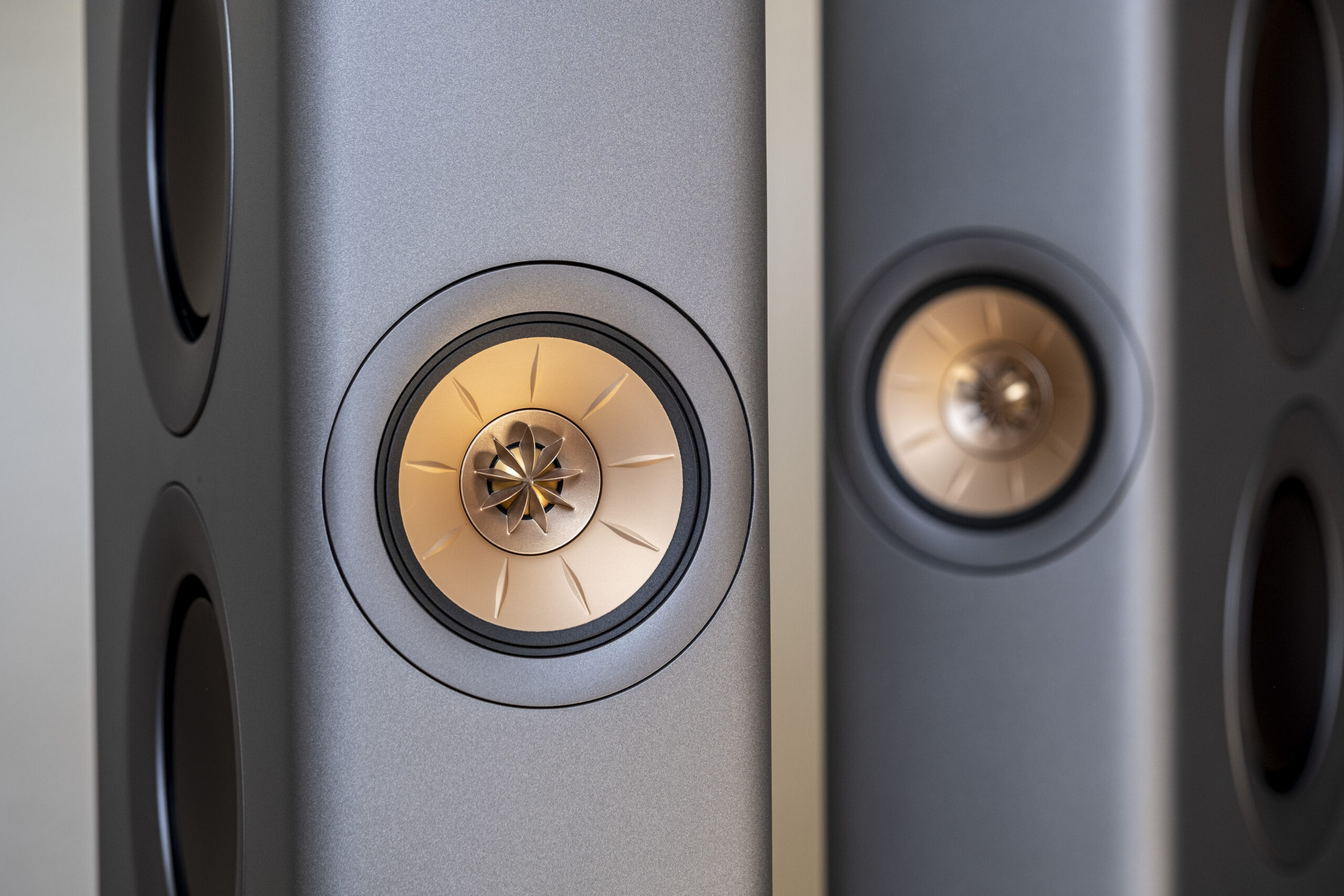
The bass on Sade’s “Soldier of Love” thundered into the listening room, perfectly controlled and so physical I could feel it throughout my body. The soundscape grew with volume, and the vocals were focused, distinct, airy and crystal clear, but with an appealing hint of warmth.
Ry Cooder’s guitar on “Get on Board” with Taj Mahal shot into the room like an arrow, clearly defined and with a dynamic backdrop that made the guitar notes shine against a black background of zero distortion.
If I have to point out anything, it’s that a good AMT tweeter or a Piega ribbon tweeter might be perceived as a little airier and with greater range, but the overall impression of the LS 60 Wireless is that it’s a uniquely well-constructed speaker that can afford to ignore the fact that there are competitors out there.
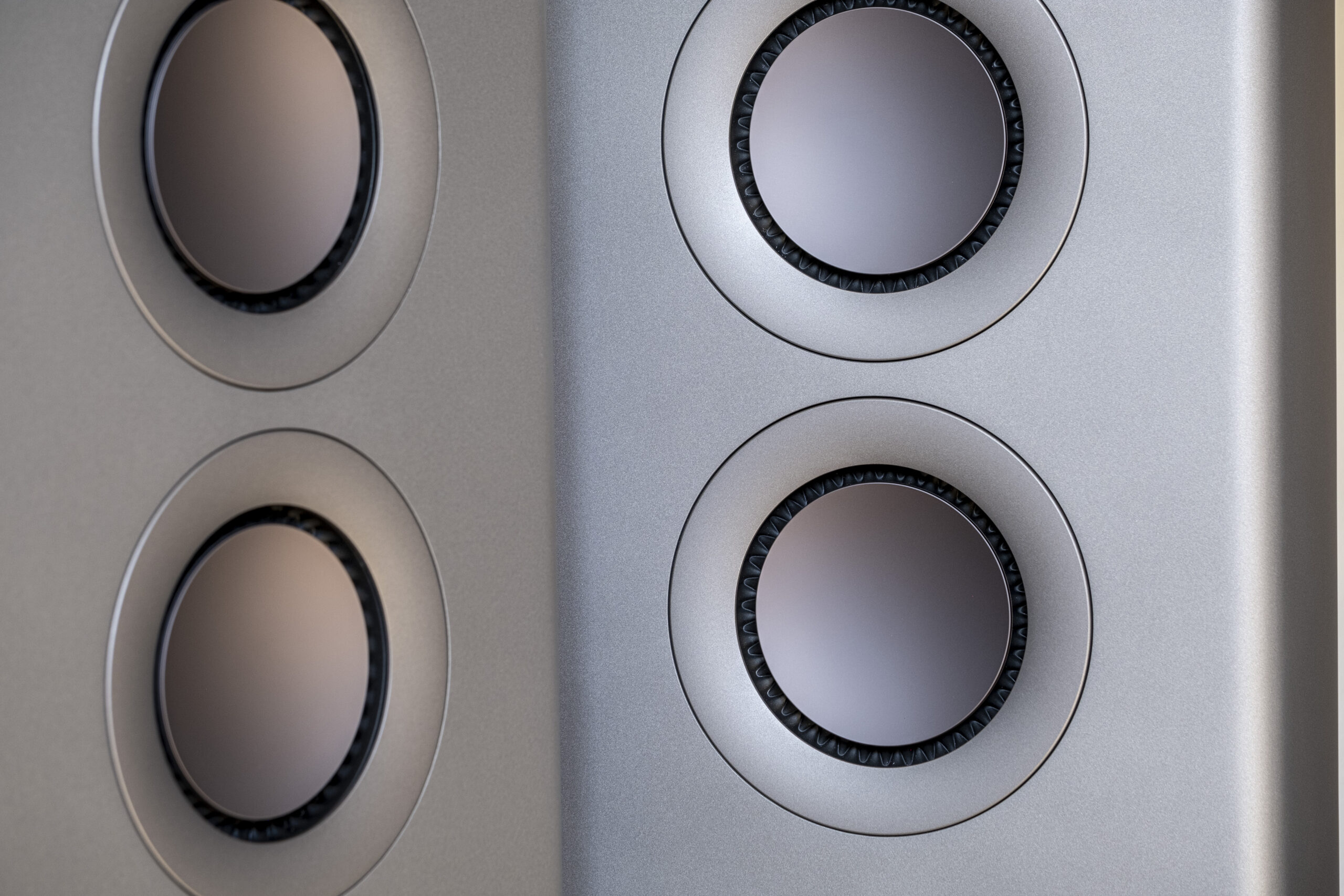
Competitors
But there are, after all. The Bowers & Wilkins Formation Duo is in the same price bracket, if you add the stands. They don’t go as deep, and you need a Formation box on top if you want to connect more sound sources, such as a TV.
The floorstanding DALI Rubicon 6 C and Piega Premium Wireless 701 also lack the outstanding range and bass dynamics of KEF speakers. Furthermore, the Dali speakers are significantly larger than the slim KEF speakers. Which are 109 cm high, just under 40 cm deep and only 13 cm wide, while the plinth is 21 cm wide.
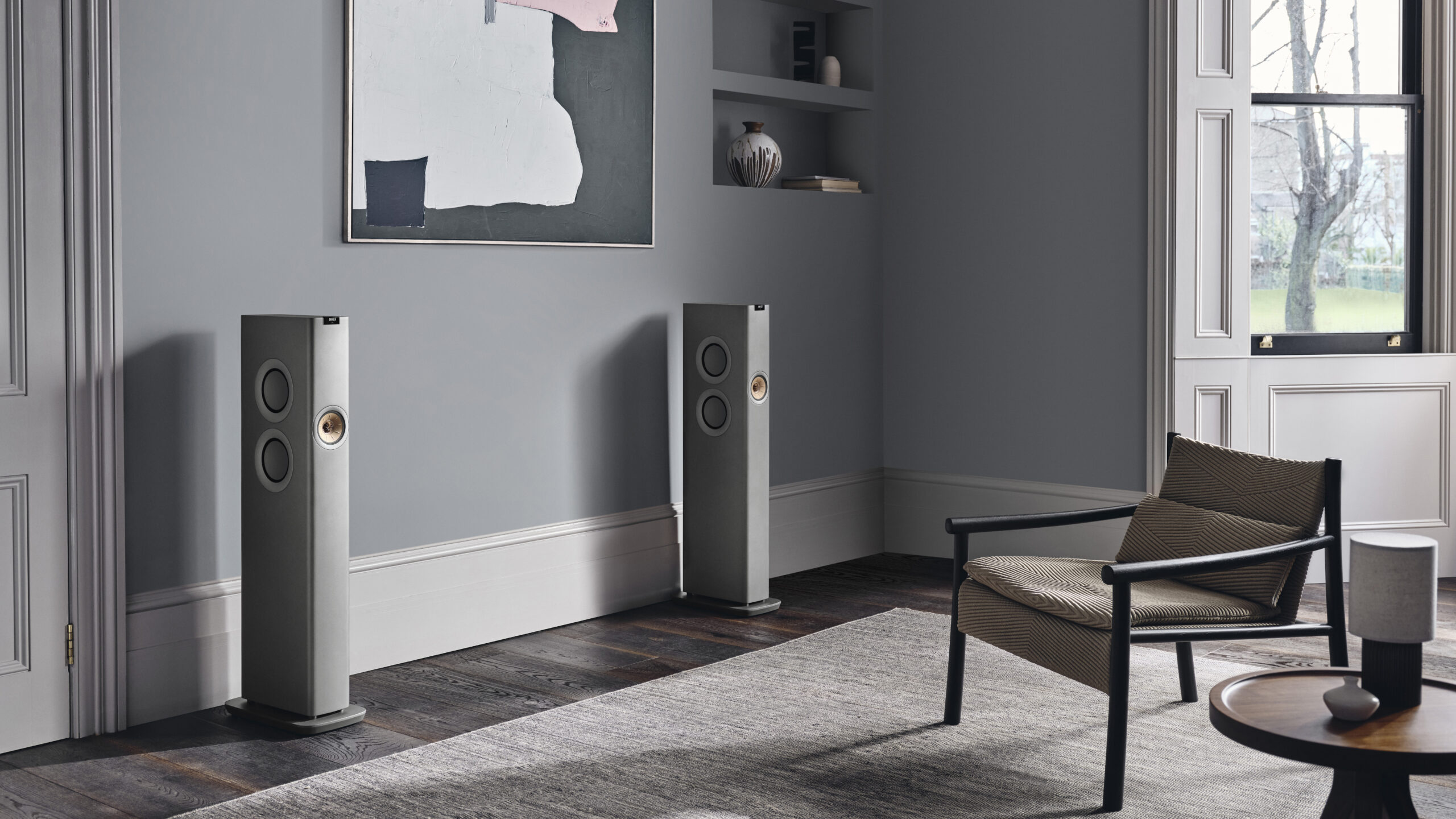
Conclusion
The KEF LS 60 Wireless are perhaps the best of their kind for under €10,000 a pair. They’re not well suited to those who have many signal sources they want to connect to, and certainly not to those who prefer to play with valves and horn speakers.
But for the many who would like a simpler stereo solution without so many other elements and with more convenient operation, we can’t think of better and more user-friendly wireless floorstanding speakers. Although they do have a slightly basic remote control, and we would have preferred a proper display showing source selection and volume, rather than a multi-coloured LED.

We think
Perfect combination of convenience and sound quality in a highly capable stereo package with everything in one place. Excellent dynamics, superb sound stage and phenomenal resolution. Plays bass with convincing authority. Intuitive app control. We prefer a display rather than colour codes to show selected input. Very basic remote control.
6999 €
Specifications
- Type: Wireless floorstanding speaker
- Woofer: 4 x 135 mm
- Midrange: 100 mm aluminium
- Tweeter: 25 mm aluminium META
- Power: 500 + 100 + 100 W
- Sound pressure level: 111 dB
- Frequency range: 26 Hz – 36 kHz (-6 dB)
- Crossover frequency: (not specified)
- Wireless: Bluetooth 4.2, Wi-Fi, AirPlay 2, Chromecast, Roon Ready
- Streaming services: Spotify Connect, Tidal, Amazon, Qobuz, Deezer, QQ Music, netradio, podcast
- Connections: Digital coaxial, TOSLINK, Ethernet, USB-A, analog RCA, HDMI eARC, subwoofer
- Dimensions and weight: 109 x 13 x 32 cm / 31 kg
- Finish: Titanium Grey, Mineral White, Royal Blue
- Web: kef.com
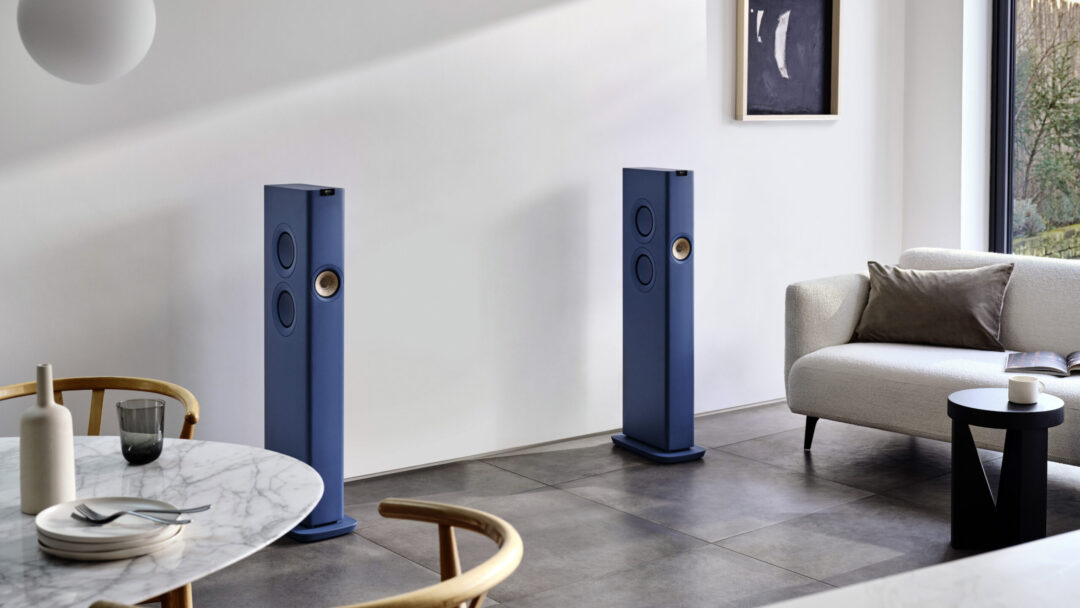

Thank you for a well crafted review full of illuminating detail. Much like the speakers/audio system itself.
Dynaudio Focus 30 and Buchardt A700 should be in the comparison list. Not the stuff listed here.